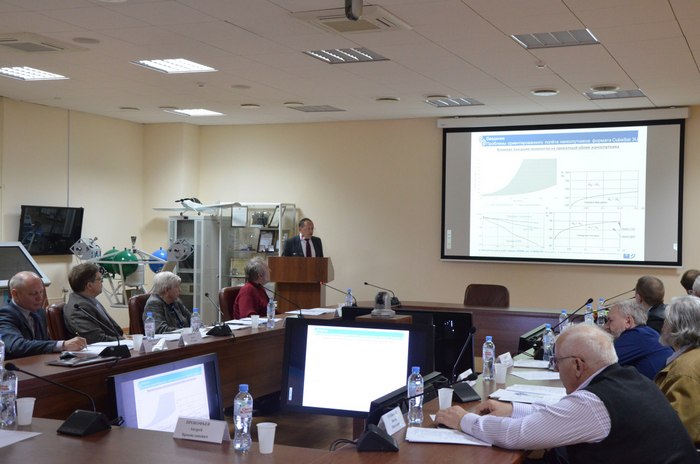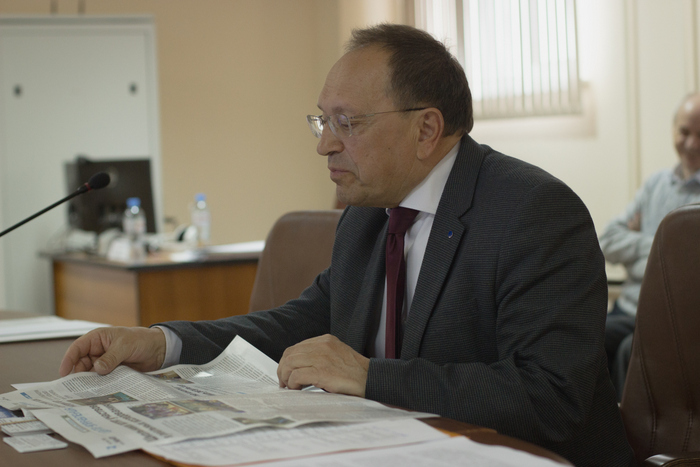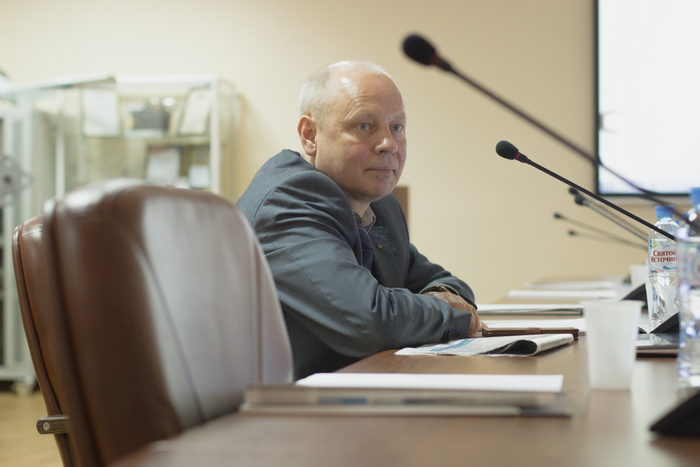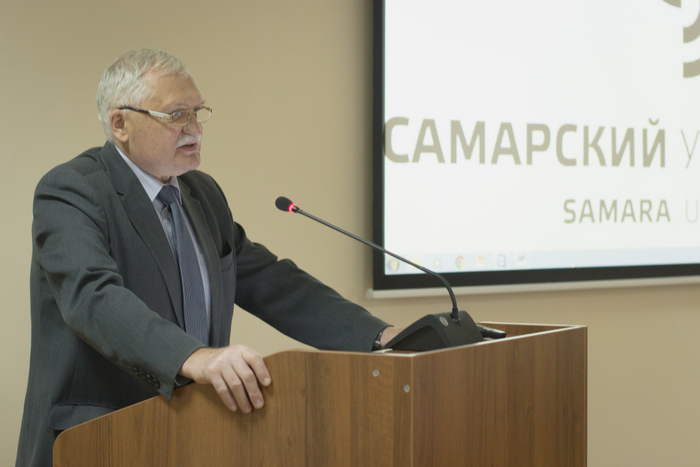An agreement concerning a consortium of Russian universities that will develop an orbit group of scientific and educational nanosatellites has been signed at Samara University. The space vehicles will investigate the condition of circumterrestrial space – ionosphere and magnetosphere.
The agreement has been signed by the representatives of six universities – Reshetnev Siberian State University of Science and Technology, Amur State University, Omsk State Technical University, Kalashnikov Izhevsk State Technical University, Ulyanovsk State University, Samara National Research University as well as “Geoskan Technologoes” JSC and “Astronomikon” companies.
The aim of the project is the development of a unique apparatus for investigating the geophysic fields and producing nonstationary 3D models, exposing hidden connections that in the future can assist in solving many problems, e.g. forecasting such natural disasters as earthquakes. Samara University has offered to develop an orbit group of 4-5 satellites of CubeSat3U format.
Greeting the consortium participants, First Vice-rector, Vice-rector for Science and Innovations Andrey Prokofiev mentioned the urgency of the problem: “Our University has an experience of developing the space vehicles in collaboration with JSC SRC “Progress”. Three “AIST” type vehicles are currently working on the orbit. Our university can produce and launch a nanosatellite independently”.
During the session the consortium participants in collaboration with JSC “Russian Space Systems”, Institute of Space Research of the Russian Academy of Sciences, Institute of Applied Geophysics of Rosgidromet, Skobeltsyn Institute of Nuclear Physics of Lomonosov Moscow State University and JSC “Astro Electron” (Oryol) have discussed various issues regarding development of the nanosatellites group.
Samara University has initiated this project and acts as its organizer. “The role of every university in the consortium is stipulated in the agreement. The roles include developing a nanosatellite, its support systems and scientific equipment that will be installed on all vehicles of the group as well as participating in data processing. We’re planning to launch the nanosatellites in 2021”, – Igor Belokonov, Doctor of Engineering Science, Professor, head of inter-university Department of Space Research of Samara University, mentioned.
The geophysic fields react to the external impact of the Sun and to the technology-related impact caused by the human activities; they also react to the processes inside the Earth. It would be interesting to investigate the local changes in the planet’s ionosphere parameters and fix their stable connections with the forthcoming earthquakes. It is obvious that the tectonic plates’ movement is accompanied by the electromagnetic waves influencing the concentration of electrons in the ionosphere’s local area and this can be regarded as a forerunner of the seismic activity.
In order to foretell the earthquakes and volcanoes’ eruption one should find out the forerunners of natural disasters, carry out a long-term research and prepare the evidential base for analysis in order to make conclusions about the place and force of probable technology-related catastrophes; the forerunners of such events could be the changes of the ionospheric parameters and the Earth’s magnetic fluctuations, – Igor Belokonov said with regard to the aims of the project. – The specialized group of nanosatellites is supposed to answer these questions.
“When we’re speaking about nanosatellites, we mean not only the affordability of launching, but, first of all, the quantity of vehicles, – chief researcher of Institute of Space Research of the Russian Academy of Sciences Oleg Vaizberg mentioned. – In order to carry out an accurate simultaneous diagnostics of the Earth’s magnetosphere dynamics we need an orbit group including about a hundred satellites. But it’s important to process information right now using one, three or five nanosatellites”.
The first stage envisages putting four or five satellites into orbit. Such group of space vehicles will be able to produce a spatial picture of the ionosphere state. The data acquired by them will be enough to start forming the primary database that can further be used for making prognoses. “At the present stage our main goal is to prove the possibility and practicability of creating a constant, renewable group of nanosatellites for monitoring the Earth’s geophysic fields as well as the ground service for managing and assessing the incoming information”, – Igor Belokonov explained.
According to the project’s developers, after space launch the nanosatellites will be leaving the carrier rocket within definite time intervals in order to distribute the group in space; simultaneously, they will be making the necessary measurements in the corresponding points of circumterrestrial space.
The implementation of the project will allow to develop the educational programs in the Russian universities dealing with space technologies. “We hope that with the help of this project the university science will be able to make a great contribution into solving a significant scientific problem of national importance; the project will also allow to make the process of training specialists meet the modern requirements and challenges of space industry development. We hope to establish a powerful multi-sectoral project uniting the university and academic communities,” – professor Igor Belokonov says. He also adds that other universities and organizations can join the consortium: “We shall keep our doors open till the end of the year.”
“The university nanosatellites are leaving the “toys for students” era and starting to deal with practical tasks including the tasks of national importance, – Aleksey Romanov, General Director Deputy for Science at JSC “Russian Space Systems” says. – Universities should concentrate on creating practical tasks for the vehicles.
For reference
For Samara University, designing and constructing rocket and space technologies, producing small spacecraft is the backbone of scientific research and specialists’ training. The scientific and educational complex formed at University provides direct participation of students in all stages of developing, producing and testing the space vehicles.
An example of successful cooperation between University and its strategic partner JSC SRC “Progress” is the creation of an orbit group of small spacecraft for scientific and educational purposes of the AIST type. The group has been operating since 2013 and is a part of a distributed space laboratory with ground and space segments. There are two "AIST" small spacecraft of the first generation and the "AIST-2D" small spacecraft for Earth remote probing in orbit.
Photos by Artyom Bogatyryov and Daniil Babonin






 RU
RU  EN
EN  CN
CN  ES
ES 